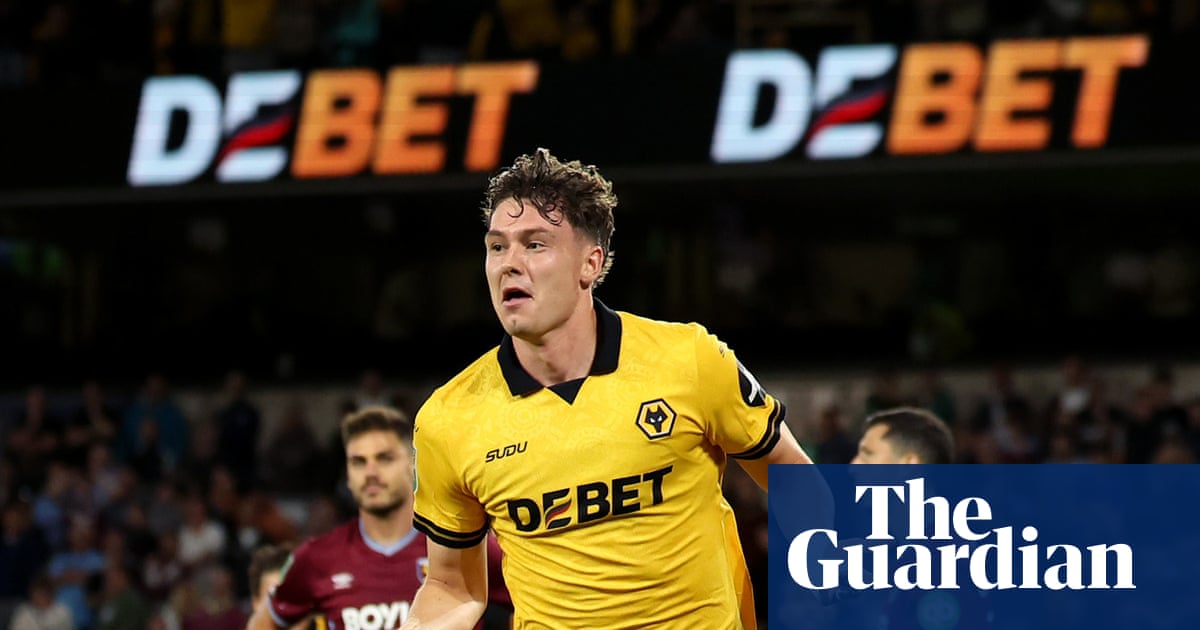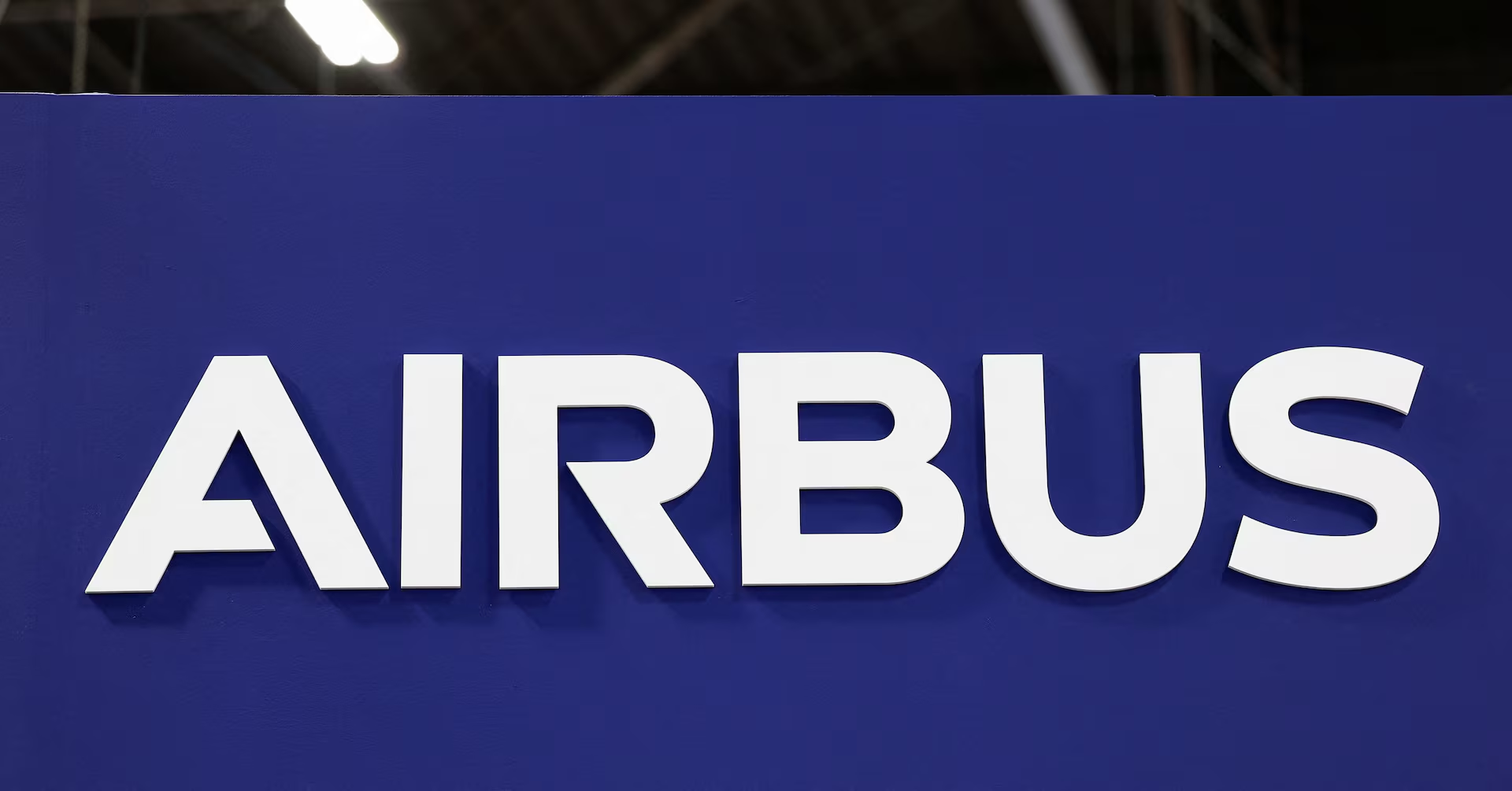Gelber AC. Knee osteoarthritis. Ann Intern Med. 2024;177(9):ITC129–129144.
Google Scholar
Yang G, Wang J, Liu Y, et al. Burden of knee osteoarthritis in 204 countries and Territories, 1990–2019: results from the global burden of disease study 2019. Arthritis Care Res (Hoboken). 2023;75(12):2489–500.
Google Scholar
Li E, Tan J, Xu K, Pan Y, Xu P. Global burden and socioeconomic impact of knee osteoarthritis: a comprehensive analysis. Front Med (Lausanne). 2024;11:1323091.
Google Scholar
Katz JN, Arant KR, Loeser RF. Diagnosis and treatment of hip and knee osteoarthritis: A review. JAMA. 2021;325(6):568–78.
Google Scholar
Moore RA, Moore OA, Derry S, Peloso PM, Gammaitoni AR, Wang H. Responder analysis for pain relief and numbers needed to treat in a meta-analysis of Etoricoxib osteoarthritis trials: bridging a gap between clinical trials and clinical practice. Ann Rheum Dis. 2010;69(2):374–9.
Google Scholar
Osani MC, Vaysbrot EE, Zhou M, McAlindon TE, Bannuru RR. Duration of symptom relief and early trajectory of adverse events for oral nonsteroidal antiinflammatory drugs in knee osteoarthritis: A systematic review and Meta-Analysis. Arthritis Care Res (Hoboken). 2020;72(5):641–51.
Google Scholar
Jones IA, Togashi R, Wilson ML, Heckmann N, Vangsness CT Jr. Intra-articular treatment options for knee osteoarthritis. Nat Rev Rheumatol. 2019;15(2):77–90.
Google Scholar
Berkovic D, Vallance P, Harris IA, et al. A systematic review and meta-analysis of short-stay programmes for total hip and knee replacement, focusing on safety and optimal patient selection. BMC Med. 2023;21(1):511.
Google Scholar
Vervullens S, Meert L, Smeets R, et al. Preoperative glycaemic control, number of pain locations, structural knee damage, self-reported central sensitisation, satisfaction and personal control are predictive of 1-year postoperative pain, and change in pain from pre- to 1-year posttotal knee arthroplasty. Knee Surg Sports Traumatol Arthrosc. 2025;33(1):201–19.
Google Scholar
Ulivi M, Orlandini L, D’Errico M, et al. Medium-term patient’s satisfaction after primary total knee arthroplasty: enhancing prediction for improved care. Orthop Traumatol Surg Res. 2024;110(2):103734.
Google Scholar
Viswanathan S, Shi Y, Galipeau J, et al. Mesenchymal stem versus stromal cells: international society for cell & gene therapy (ISCT®) mesenchymal stromal cell committee position statement on nomenclature. Cytotherapy. 2019;21(10):1019–24.
Google Scholar
Zhou J, Shi Y. Mesenchymal stem/stromal cells (MSCs): origin, immune regulation, and clinical applications. Cell Mol Immunol. 2023;20(6):555–7.
Google Scholar
Hoang DM, Pham PT, Bach TQ, et al. Stem cell-based therapy for human diseases. Signal Transduct Target Ther. 2022;7(1):272.
Google Scholar
Meng Z, He D, Wang H, et al. Mapping the knowledge landscape of and emerging future trends in stem cell therapy for osteoarthritis: A bibliometric analysis of the literature from 1998 to 2024. J Multidiscip Healthc. 2025;18:1281–95.
Google Scholar
Zhou C, Zhang B, Yang Y, et al. Stem cell-derived exosomes: emerging therapeutic opportunities for wound healing. Stem Cell Res Ther. 2023;14(1):107.
Google Scholar
Théry C, Zitvogel L, Amigorena S. Exosomes: composition, biogenesis and function. Nat Rev Immunol. 2002;2(8):569–79.
Google Scholar
Jeppesen DK, Fenix AM, Franklin JL, et al. Reassessment Exosome Composition Cell. 2019;177(2):428–e44518.
Google Scholar
Zou J, Yang W, Cui W, et al. Therapeutic potential and mechanisms of mesenchymal stem cell-derived exosomes as bioactive materials in tendon-bone healing. J Nanobiotechnol. 2023;21(1):14.
Google Scholar
Yáñez-Mó M, Siljander PR, Andreu Z, et al. Biological properties of extracellular vesicles and their physiological functions. J Extracell Vesicles. 2015;4:27066.
Google Scholar
Zeng Z, Zhou X, Wang Y, et al. Mitophagy-A new target of bone disease. Biomolecules. 2022;12(10):1420.
Google Scholar
Zeng B, Li Y, Khan N, et al. Yin-Yang: two sides of extracellular vesicles in inflammatory diseases. J Nanobiotechnol. 2024;22(1):514.
Google Scholar
Kolasinski SL, Neogi T, Hochberg MC, et al. 2019 American college of Rheumatology/Arthritis foundation guideline for the management of osteoarthritis of the Hand, Hip, and knee. Arthritis Rheumatol. 2020;72(2):220–33.
Google Scholar
Sharma L. Osteoarthritis of the knee. N Engl J Med. 2021;384(1):51–9.
Google Scholar
Hardingham T. Chondroitin sulfate and joint disease. Osteoarthr Cartil. 1998;6(Suppl A):3–5.
Tuan RS, Chen AF, Klatt BA. Cartilage regeneration. J Am Acad Orthop Surg. 2013;21(5):303–11.
Google Scholar
Guilak F, Nims RJ, Dicks A, Wu CL, Meulenbelt I. Osteoarthritis as a disease of the cartilage pericellular matrix. Matrix Biol. 2018;71–72:40–50.
Google Scholar
Yunus M, Nordin A, Kamal H. Pathophysiological perspective of osteoarthritis. Med (Kaunas). 2020;56(11):614.
Google Scholar
Peng Z, Sun H, Bunpetch V, et al. The regulation of cartilage extracellular matrix homeostasis in joint cartilage degeneration and regeneration. Biomaterials. 2021;268:120555.
Google Scholar
Yang CY, Chanalaris A, Troeberg L. ADAMTS and ADAM metalloproteinases in osteoarthritis – looking beyond the ‘usual suspects’. Osteoarthritis Cartilage. 2017;25(7):1000–9.
Google Scholar
Sang W, Xue S, Jiang Y, et al. METTL3 involves the progression of osteoarthritis probably by affecting ECM degradation and regulating the inflammatory response. Life Sci. 2021;278:119528.
Google Scholar
Coryell PR, Diekman BO, Loeser RF. Mechanisms and therapeutic implications of cellular senescence in osteoarthritis. Nat Rev Rheumatol. 2021;17(1):47–57.
Google Scholar
Lieberthal J, Sambamurthy N, Scanzello CR. Inflammation in joint injury and post-traumatic osteoarthritis. Osteoarthritis Cartilage. 2015;23(11):1825–34.
Google Scholar
Haraden CA, Huebner JL, Hsueh MF, Li YJ, Kraus VB. Synovial fluid biomarkers associated with osteoarthritis severity reflect macrophage and neutrophil related inflammation. Arthritis Res Ther. 2019;21(1):146.
Google Scholar
Caron MM, Emans PJ, Coolsen MM, et al. Redifferentiation of dedifferentiated human articular chondrocytes: comparison of 2D and 3D cultures. Osteoarthritis Cartilage. 2012;20(10):1170–8.
Google Scholar
van Gastel N, Stegen S, Eelen G, et al. Lipid availability determines fate of skeletal progenitor cells via SOX9. Nature. 2020;579(7797):111–7.
Google Scholar
Jouan Y, Bouchemla Z, Bardèche-Trystram B, et al. Lin28a induces SOX9 and chondrocyte reprogramming via HMGA2 and blunts cartilage loss in mice. Sci Adv. 2022;8(34):eabn3106.
Google Scholar
Liu Y, Xie HQ, Shen B. Type H vessels-a Bridge connecting subchondral bone remodelling and articular cartilage degeneration in osteoarthritis development. Rheumatology (Oxford). 2023;62(4):1436–44.
Google Scholar
Kahle ER, Patel N, Sreenivasappa HB, Marcolongo MS, Han L. Targeting cell-matrix interface mechanobiology by integrating AFM with fluorescence microscopy. Prog Biophys Mol Biol. 2022;176:67–81.
Google Scholar
Jia Y, Wang A, Zhao B, et al. An optimized method for obtaining clinical-grade specific cell subpopulations from human umbilical cord-derived mesenchymal stem cells. Cell Prolif. 2022;55(10):e13300.
Google Scholar
Montemurro T, Lavazza C, Montelatici E, et al. Off-the-Shelf Cord-Blood mesenchymal stromal cells: Production, quality Control, and clinical use. Cells. 2024;13(12):1066.
Google Scholar
Matas J, García C, Poblete D, et al. A phase I Dose-Escalation clinical trial to assess the safety and efficacy of umbilical Cord-Derived mesenchymal stromal cells in knee osteoarthritis. Stem Cells Transl Med. 2024;13(3):193–203.
Google Scholar
Chen CF, Hu CC, Wu CT, et al. Treatment of knee osteoarthritis with intra-articular injection of allogeneic adipose-derived stem cells (ADSCs) ELIXCYTE®: a phase I/II, randomized, active-control, single-blind, multiple-center clinical trial. Stem Cell Res Ther. 2021;12(1):562.
Google Scholar
Lee WS, Kim HJ, Kim KI, Kim GB, Jin W. Intra-Articular injection of autologous adipose Tissue-Derived mesenchymal stem cells for the treatment of knee osteoarthritis: A phase IIb, Randomized, Placebo-Controlled clinical trial. Stem Cells Transl Med. 2019;8(6):504–11.
Google Scholar
Emadedin M, Labibzadeh N, Liastani MG, et al. Intra-articular implantation of autologous bone marrow-derived mesenchymal stromal cells to treat knee osteoarthritis: a randomized, triple-blind, placebo-controlled phase 1/2 clinical trial. Cytotherapy. 2018;20(10):1238–46.
Google Scholar
Lee BW, Lee JJ, Jung JY, Ju JH. Intra-Articular injection of human bone Marrow-Derived mesenchymal stem cells in knee osteoarthritis: A Randomized, Double-Blind, controlled trial. Cell Transpl. 2025;34:9636897241303275.
Google Scholar
Figueroa-Valdés AI, Luz-Crawford P, Herrera-Luna Y, et al. Clinical-grade extracellular vesicles derived from umbilical cord mesenchymal stromal cells: preclinical development and first-in-human intra-articular validation as therapeutics for knee osteoarthritis. J Nanobiotechnol. 2025;23(1):13.
Google Scholar
Wang Y, Kong Y, Du J, et al. Injection of human umbilical cord mesenchymal stem cells exosomes for the treatment of knee osteoarthritis: from preclinical to clinical research. J Transl Med. 2025;23(1):641.
Google Scholar
Copp G, Robb KP, Viswanathan S. Culture-expanded mesenchymal stromal cell therapy: does it work in knee osteoarthritis? A pathway to clinical success. Cell Mol Immunol. 2023;20(6):626–50.
Google Scholar
Wang X, Ouyang L, Chen W, Cao Y, Zhang L. Efficient expansion and delayed senescence of hUC-MSCs by microcarrier-bioreactor system. Stem Cell Res Ther. 2023;14(1):284.
Google Scholar
Yue S, Zhai G, Zhao S, et al. The biphasic role of the infrapatellar fat pad in osteoarthritis. Biomed Pharmacother. 2024;179:117364.
Google Scholar
Taheri S, Yoshida T, Böker KO, et al. Investigating the microchannel architectures inside the subchondral bone in relation to estimated hip reaction forces on the human femoral head. Calcif Tissue Int. 2021;109(5):510–24.
Google Scholar
Warmink K, Rios JL, Varderidou-Minasian S, et al. Mesenchymal stem/stromal cells-derived extracellular vesicles as a potentially more beneficial therapeutic strategy than MSC-based treatment in a mild metabolic osteoarthritis model. Stem Cell Res Ther. 2023;14(1):137.
Google Scholar
Giorgino R, Albano D, Fusco S, Peretti GM, Mangiavini L, Messina C. Knee osteoarthritis: Epidemiology, Pathogenesis, and mesenchymal stem cells: what else is new? An update. Int J Mol Sci. 2023;24(7):6405.
Google Scholar
Manferdini C, Maumus M, Gabusi E, et al. Adipose-derived mesenchymal stem cells exert antiinflammatory effects on chondrocytes and synoviocytes from osteoarthritis patients through prostaglandin E2. Arthritis Rheum. 2013;65(5):1271–81.
Google Scholar
Yang G, Fan X, Liu Y, et al. Immunomodulatory mechanisms and therapeutic potential of mesenchymal stem cells. Stem Cell Rev Rep. 2023;19(5):1214–31.
Google Scholar
Xu L, Wu Y, Xiong Z, Zhou Y, Ye Z, Tan WS. Mesenchymal stem cells reshape and provoke proliferation of articular chondrocytes by paracrine secretion. Sci Rep. 2016;6:32705.
Google Scholar
Pers YM, Ruiz M, Noël D, Jorgensen C. Mesenchymal stem cells for the management of inflammation in osteoarthritis: state of the Art and perspectives. Osteoarthritis Cartilage. 2015;23(11):2027–35.
Google Scholar
Chen X, McClurg A, Zhou GQ, McCaigue M, Armstrong MA, Li G. Chondrogenic differentiation alters the immunosuppressive property of bone marrow-derived mesenchymal stem cells, and the effect is partially due to the upregulated expression of B7 molecules. Stem Cells. 2007;25(2):364–70.
Google Scholar
Liu H, Kemeny DM, Heng BC, Ouyang HW, Melendez AJ, Cao T. The immunogenicity and Immunomodulatory function of osteogenic cells differentiated from mesenchymal stem cells. J Immunol. 2006;176(5):2864–71.
Google Scholar
Liu B, Zhang M, Zhao J, Zheng M, Yang H. Imbalance of M1/M2 macrophages is linked to severity level of knee osteoarthritis. Exp Ther Med. 2018;16(6):5009–14.
Google Scholar
Xie J, Huang Z, Yu X, Zhou L, Pei F. Clinical implications of macrophage dysfunction in the development of osteoarthritis of the knee. Cytokine Growth Factor Rev. 2019;46:36–44.
Google Scholar
Zhao X, Zhao Y, Sun X, Xing Y, Wang X, Yang Q. Immunomodulation of MSCs and MSC-Derived extracellular vesicles in osteoarthritis. Front Bioeng Biotechnol. 2020;8:575057.
Google Scholar
Li P, Lv S, Jiang W, et al. Exosomes derived from umbilical cord mesenchymal stem cells protect cartilage and regulate the polarization of macrophages in osteoarthritis. Ann Transl Med. 2022;10(18):976.
Google Scholar
Li K, Yan G, Huang H, et al. Anti-inflammatory and Immunomodulatory effects of the extracellular vesicles derived from human umbilical cord mesenchymal stem cells on osteoarthritis via M2 macrophages. J Nanobiotechnol. 2022;20(1):38.
Google Scholar
Zhou H, Shen X, Yan C, et al. Extracellular vesicles derived from human umbilical cord mesenchymal stem cells alleviate osteoarthritis of the knee in mice model by interacting with METTL3 to reduce m6A of NLRP3 in macrophage. Stem Cell Res Ther. 2022;13(1):322.
Google Scholar
Tian G, Yin H, Zheng J, et al. Promotion of osteochondral repair through immune microenvironment regulation and activation of endogenous chondrogenesis via the release of apoptotic vesicles from donor MSCs. Bioact Mater. 2024;41:455–70.
Google Scholar
Li Z, Li Q, Tong K, et al. BMSC-derived exosomes promote tendon-bone healing after anterior cruciate ligament reconstruction by regulating M1/M2 macrophage polarization in rats. Stem Cell Res Ther. 2022;13(1):295.
Google Scholar
Li B, Shen E, Wu Z, et al. BMSC-derived exosomes attenuate rat osteoarthritis by regulating macrophage polarization through PINK1/parkin signaling pathway. Cartilage. 2024:19476035241245805.
Sun W, Qu S, Ji M, Sun Y, Hu B. BMP-7 modified exosomes derived from synovial mesenchymal stem cells attenuate osteoarthritis by M2 polarization of macrophages. Heliyon. 2023;9(9):e19934.
Google Scholar
Zhang S, Chuah SJ, Lai RC, Hui J, Lim SK, Toh WS. MSC exosomes mediate cartilage repair by enhancing proliferation, attenuating apoptosis and modulating immune reactivity. Biomaterials. 2018;156:16–27.
Google Scholar
Cosenza S, Toupet K, Maumus M, et al. Mesenchymal stem cells-derived exosomes are more immunosuppressive than microparticles in inflammatory arthritis. Theranostics. 2018;8(5):1399–410.
Google Scholar
Sankaranarayanan J, Lee SC, Kim HK, Kang JY, Kuppa SS, Seon JK. Cinnamaldehyde-Treated bone marrow Mesenchymal-Stem-Cell-Derived exosomes via aqueous Two-Phase system attenuate IL-1β-Induced inflammation and catabolism via modulation of Proinflammatory signaling pathways. Int J Mol Sci. 2024;25(13):7263.
Google Scholar
Zhou L, Ye H, Liu L, Chen Y. Human bone mesenchymal stem Cell-Derived exosomes inhibit IL-1β-Induced inflammation in osteoarthritis chondrocytes. Cell J. 2021;23(4):485–94.
Google Scholar
Dong J, Li L, Fang X, Zang M, Exosome-Encapsulated. microRNA-127-3p released from bone Marrow-Derived mesenchymal stem cells alleviates osteoarthritis through regulating CDH11-Mediated Wnt/β-Catenin pathway. J Pain Res. 2021;14:297–310.
Google Scholar
Haghwerdi F, Khozaei Ravari M, Taghiyar L, et al. Application of bone and cartilage extracellular matrices in articular cartilage regeneration. Biomed Mater. 2021;16(4).
Harrell CR, Markovic BS, Fellabaum C, Arsenijevic A, Volarevic V. Mesenchymal stem cell-based therapy of osteoarthritis: current knowledge and future perspectives. Biomed Pharmacother. 2019;109:2318–26.
Google Scholar
Chen X, Shi Y, Xue P, Ma X, Li J, Zhang J. Mesenchymal stem cell-derived Exosomal microRNA-136-5p inhibits chondrocyte degeneration in traumatic osteoarthritis by targeting ELF3. Arthritis Res Ther. 2020;22(1):256.
Google Scholar
Tang S, Chen P, Zhang H, et al. Comparison of curative effect of human umbilical Cord-Derived mesenchymal stem cells and their small extracellular vesicles in treating osteoarthritis. Int J Nanomed. 2021;16:8185–202.
Google Scholar
Liu Y, Zeng Y, Si HB, Tang L, Xie HQ, Shen B. Exosomes derived from human Urine-Derived stem cells overexpressing miR-140-5p alleviate knee osteoarthritis through downregulation of VEGFA in a rat model. Am J Sports Med. 2022;50(4):1088–105.
Google Scholar
Wang Z, Yan K, Ge G, et al. Exosomes derived from miR-155-5p-overexpressing synovial mesenchymal stem cells prevent osteoarthritis via enhancing proliferation and migration, attenuating apoptosis, and modulating extracellular matrix secretion in chondrocytes. Cell Biol Toxicol. 2021;37(1):85–96.
Google Scholar
Hunziker EB, Quinn TM, Häuselmann HJ. Quantitative structural organization of normal adult human articular cartilage. Osteoarthritis Cartilage. 2002;10(7):564–72.
Google Scholar
Zhu Q, Yin F, Qin J, et al. Procr(+) chondroprogenitors sense mechanical stimuli to govern articular cartilage maintenance and regeneration. Cell. 2025;188(19):5194–e21116.
Google Scholar
Maenohara Y, Chijimatsu R, Tachibana N, et al. Lubricin contributes to homeostasis of articular cartilage by modulating differentiation of superficial zone cells. J Bone Min Res. 2021;36(4):792–802.
Google Scholar
Zhi Z, Zhang C, Kang J, et al. The therapeutic effect of bone marrow-derived mesenchymal stem cells on osteoarthritis is improved by the activation of the KDM6A/SOX9 signaling pathway caused by exposure to hypoxia. J Cell Physiol. 2020;235(10):7173–82.
Google Scholar
Li Q, Yu H, Sun M, et al. The tissue origin effect of extracellular vesicles on cartilage and bone regeneration. Acta Biomater. 2021;125:253–66.
Google Scholar
Chen S, Tang Y, Liu Y, et al. Exosomes derived from miR-375-overexpressing human adipose mesenchymal stem cells promote bone regeneration. Cell Prolif. 2019;52(5):e12669.
Google Scholar
Zhang S, Jin Z. Bone mesenchymal stem cell-derived extracellular vesicles containing long noncoding RNA NEAT1 relieve osteoarthritis. Oxid Med Cell Longev. 2022;2022:5517648.
Ye P, Mi Z, Wei D, Gao P, Ma M, Yang H. miR-3960 from mesenchymal stem cell-derived extracellular vesicles inactivates SDC1/Wnt/β-catenin axis to relieve chondrocyte injury in osteoarthritis by targeting PHLDA2. Stem Cells Int. 2022;2022:9455152.
Mao G, Zhang Z, Hu S, et al. Exosomes derived from miR-92a-3p-overexpressing human mesenchymal stem cells enhance chondrogenesis and suppress cartilage degradation via targeting WNT5A. Stem Cell Res Ther. 2018;9(1):247.
Google Scholar
Zhang B, Tian X, Qu Z, Hao J, Zhang W. Hypoxia-Preconditioned extracellular vesicles from mesenchymal stem cells improve cartilage repair in osteoarthritis. Membr (Basel). 2022;12(2):225.
Google Scholar
Rong Y, Zhang J, Jiang D, et al. Hypoxic pretreatment of small extracellular vesicles mediates cartilage repair in osteoarthritis by delivering miR-216a-5p. Acta Biomater. 2021;122:325–42.
Google Scholar
Hu J, Shi ZS, Liu XZ, et al. Exosomes derived from Runx2-overexpressing BMSCs enhance cartilage tissue regeneration and prevent osteoarthritis of the knee in a rabbit model. Stem Cells Int. 2022;2022:6865041.
Li F, Xu Z, Xie Z, et al. Adipose mesenchymal stem cells-derived exosomes alleviate osteoarthritis by transporting MicroRNA – 376c-3p and targeting the WNT-beta-catenin signaling axis. Apoptosis. 2023;28(3–4):362–78.
Google Scholar
Xin Y, Wang YM, Zhang H, et al. Aging adversely impacts biological properties of human bone marrow-derived mesenchymal stem cells: implications for tissue engineering heart valve construction. Artif Organs. 2010;34(3):215–22.
Google Scholar
Diekman BO, Loeser RF. Aging and the emerging role of cellular senescence in osteoarthritis. Osteoarthritis Cartilage. 2024;32(4):365–71.
Google Scholar
Xie J, Wang Y, Lu L, et al. Cellular senescence in knee osteoarthritis: molecular mechanisms and therapeutic implications. Ageing Res Rev. 2021;70:101413.
Google Scholar
Cao H, Chen M, Cui X, et al. Cell-Free osteoarthritis treatment with Sustained-Release of Chondrocyte-Targeting exosomes from umbilical Cord-Derived mesenchymal stem cells to rejuvenate aging chondrocytes. ACS Nano. 2023;17(14):13358–76.
Google Scholar
Lei Q, Gao F, Liu T, et al. Extracellular vesicles deposit PCNA to rejuvenate aged bone marrow-derived mesenchymal stem cells and slow age-related degeneration. Sci Transl Med. 2021;13(578):eaaz8697. [pii].
Google Scholar
Gorgun C, Africano C, Ciferri MC, et al. Preconditioned mesenchymal stromal Cell-Derived extracellular vesicles (EVs) counteract inflammaging. Cells. 2022;11(22):3695.
Google Scholar
Kirkland JL, Tchkonia T. Senolytic drugs: from discovery to translation. J Intern Med. 2020;288(5):518–36.
Google Scholar
Iqbal Z, Rehman K, Xia J, et al. Biomaterial-assisted targeted and controlled delivery of CRISPR/Cas9 for precise gene editing. Biomater Sci. 2023;11(11):3762–83.
Google Scholar
Duan L, Xu L, Xu X, et al. Exosome-mediated delivery of gene vectors for gene therapy. Nanoscale. 2021;13(3):1387–97.
Google Scholar
Feng K, Liu J, Gong L, et al. Engineered MSC-sEVs as a versatile nanoplatform for enhanced osteoarthritis treatment via targeted elimination of senescent chondrocytes and maintenance of cartilage matrix metabolic homeostasis. Adv Sci (Weinh). 2025;12(8):e2413759.
Google Scholar
Long L, Zou G, Cheng Y, Li F, Wu H, Shen Y. MATN3 delivered by exosome from synovial mesenchymal stem cells relieves knee osteoarthritis: evidence from in vitro and in vivo studies. J Orthop Translat. 2023;41:20–32.
Google Scholar
Tao SC, Yuan T, Zhang YL, Yin WJ, Guo SC, Zhang CQ. Exosomes derived from miR-140-5p-overexpressing human synovial mesenchymal stem cells enhance cartilage tissue regeneration and prevent osteoarthritis of the knee in a rat model. Theranostics. 2017;7(1):180–95.
Google Scholar
Liu X, Rong N, Tian Z, et al. Acoustothermal transfection for cell therapy. Sci Adv. 2024;10(16):eadk1855.
Google Scholar
Zhu S, Xuan J, Shentu Y, et al. Effect of chitin-architected Spatiotemporal three-dimensional culture microenvironments on human umbilical cord-derived mesenchymal stem cells. Bioact Mater. 2024;35:291–305.
Google Scholar
Chen JG, Zhang EC, Wan YY, Huang TY, Wang YC, Jiang HY. Engineered hsa-miR-455-3p-Abundant extracellular vesicles derived from 3D-Cultured adipose mesenchymal stem cells for Tissue-Engineering hyaline cartilage regeneration. Adv Healthc Mater. 2024;13(18):e2304194.
Google Scholar
Yan L, Li D, Li S, et al. Exosomes derived from 3D-cultured MSCs alleviate knee osteoarthritis by promoting M2 macrophage polarization through miR-365a-5p and inhibiting TLR2/Myd88/NF-κB pathway. Chem Eng J. 2024;497:154432.
Google Scholar
Liu W, Li L, Rong Y, et al. Hypoxic mesenchymal stem cell-derived exosomes promote bone fracture healing by the transfer of miR-126. Acta Biomater. 2020;103:196–212.
Google Scholar
Zhen G, Wen C, Jia X, et al. Inhibition of TGF-β signaling in mesenchymal stem cells of subchondral bone attenuates osteoarthritis. Nat Med. 2013;19(6):704–12.
Google Scholar
Pang L, Jin H, Lu Z, et al. Treatment with mesenchymal stem Cell-Derived Nanovesicle-Containing gelatin methacryloyl hydrogels alleviates osteoarthritis by modulating chondrogenesis and macrophage polarization. Adv Healthc Mater. 2023;12(17):e2300315.
Google Scholar
Guo S, Debbi L, Zohar B, et al. Stimulating extracellular vesicles production from engineered tissues by mechanical forces. Nano Lett. 2021;21(6):2497–504.
Google Scholar
Wang P, Zhao H, Chen W, et al. Cell-free osteoarthritis treatment with dual-engineered chondrocyte-targeted extracellular vesicles derived from mechanical loading primed mesenchymal stem cells. J Tissue Eng. 2025;16:20417314241312563.
Google Scholar
Lu M, Lou A, Gao J, et al. Quercetin-primed MSC exosomes synergistically attenuate osteoarthritis progression. J Orthop Surg Res. 2025;20(1):373.
Google Scholar
Kao TW, Liu YS, Yang CY, Lee OK. Mechanotransduction of mesenchymal stem cells and hemodynamic implications. Chin J Physiol. 2023;66(2):55–64.
Google Scholar
Skibber MA, Olson SD, Prabhakara KS, Gill BS, Cox CS Jr. Enhancing mesenchymal stromal cell potency: inflammatory licensing via mechanotransduction. Front Immunol. 2022;13:874698.
Google Scholar
Colombini A, Ragni E, Mortati L, et al. Adipose-Derived mesenchymal stromal cells treated with Interleukin 1 beta produced Chondro-Protective vesicles able to fast penetrate in cartilage. Cells. 2021;10(5):1180.
Google Scholar
Kim M, Shin DI, Choi BH, Min BH. Exosomes from IL-1β-Primed mesenchymal stem cells inhibited IL-1β- and TNF-α-Mediated inflammatory responses in Osteoarthritic SW982 cells. Tissue Eng Regen Med. 2021;18(4):525–36.
Google Scholar
Chen M, Liu Y, Cao Y, et al. Remodeling the Proinflammatory microenvironment in osteoarthritis through Interleukin-1 beta tailored exosome cargo for inflammatory regulation and cartilage regeneration. ACS Nano. 2025;19(4):4924–41.
Google Scholar
Duan A, Shen K, Li B, et al. Extracellular vesicles derived from LPS-preconditioned human synovial mesenchymal stem cells inhibit extracellular matrix degradation and prevent osteoarthritis of the knee in a mouse model. Stem Cell Res Ther. 2021;12(1):427.
Google Scholar
Molnar V, Matišić V, Kodvanj I, et al. Cytokines and chemokines involved in osteoarthritis pathogenesis. Int J Mol Sci. 2021;22(17):9208.
Google Scholar
Wu J, Wu J, Xiang W, et al. Engineering exosomes derived from TNF-α preconditioned IPFP-MSCs enhance both yield and therapeutic efficacy for osteoarthritis. J Nanobiotechnol. 2024;22(1):555.
Google Scholar
Yamamoto K, Troeberg L, Scilabra SD, et al. LRP-1-mediated endocytosis regulates extracellular activity of ADAMTS-5 in articular cartilage. FASEB J. 2013;27(2):511–21.
Google Scholar
Wang R, Xu B. TGF-β1-modified MSC-derived Exosomal miR-135b attenuates cartilage injury via promoting M2 synovial macrophage polarization by targeting MAPK6. Cell Tissue Res. 2021;384(1):113–27.
Google Scholar
Zhao T, Mu Y, Deng H, et al. Research hotspots and trends of mesenchymal stem cell-derived extracellular vesicles for drug delivery: a bibliometric and visualization analysis from 2013 to 2023. Front Cell Dev Biol. 2024;12:1412363.
Google Scholar
Hao D, Lopez JM, Chen J, et al. Engineering extracellular microenvironment for tissue regeneration. Bioeng (Basel). 2022;9(5):202.
Google Scholar
Weng Z, Zhang B, Wu C, et al. Therapeutic roles of mesenchymal stem cell-derived extracellular vesicles in cancer. J Hematol Oncol. 2021;14(1):136.
Google Scholar
Liang Y, Xu X, Li X, et al. Chondrocyte-Targeted MicroRNA delivery by engineered exosomes toward a Cell-Free osteoarthritis therapy. ACS Appl Mater Interfaces. 2020;12(33):36938–47.
Google Scholar
Xu X, Liang Y, Li X, et al. Exosome-mediated delivery of Kartogenin for chondrogenesis of synovial fluid-derived mesenchymal stem cells and cartilage regeneration. Biomaterials. 2021;269:120539.
Google Scholar
Liang Y, Xu X, Xu L, et al. Chondrocyte-specific genomic editing enabled by hybrid exosomes for osteoarthritis treatment. Theranostics. 2022;12(11):4866–78.
Google Scholar
Zhang H, Yan W, Wang J, et al. Surface functionalization of exosomes for chondrocyte-targeted SiRNA delivery and cartilage regeneration. J Control Release. 2024;369:493–505.
Google Scholar
Midekessa G, Godakumara K, Ord J, et al. Zeta potential of extracellular vesicles: toward Understanding the attributes that determine colloidal stability. ACS Omega. 2020;5(27):16701–10.
Google Scholar
Shamji MH, Boyle RJ. Adverse effects of Dupilumab, effects of peanut OIT on the gut Microbiome and allergy training in the united Kingdom. Clin Exp Allergy. 2025;55(5):364–6.
Google Scholar
Desai N, Rana D, Patel M, et al. Nanoparticle therapeutics in clinical perspective: Classification, marketed Products, and regulatory landscape. Small. 2025;21(29):e2502315.
Google Scholar
Zhang C, Pathrikar TV, Baby HM, et al. Charge-Reversed exosomes for targeted gene delivery to cartilage for osteoarthritis treatment. Small Methods. 2024;8(9):e2301443.
Google Scholar
Feng K, Xie X, Yuan J, et al. Reversing the surface charge of MSC-derived small extracellular vesicles by εPL-PEG-DSPE for enhanced osteoarthritis treatment. J Extracell Vesicles. 2021;10(13):e12160.
Google Scholar
Qiu B, Xu X, Yi P, Hao Y. Curcumin reinforces MSC-derived exosomes in attenuating osteoarthritis via modulating the miR-124/NF-kB and miR-143/ROCK1/TLR9 signalling pathways. J Cell Mol Med. 2020;24(18):10855–65.
Google Scholar
Zhang Y, Liu K, Ma X, et al. Therapeutic effects of puerarin loaded bone marrow mesenchymal stem Cell-Derived exosomes in a rat model of osteoarthritis. Chem Biodivers. 2025;22(3):e202402095.
Google Scholar
Tao Y, Zhou J, Wang Z, et al. Human bone mesenchymal stem cells-derived Exosomal miRNA-361-5p alleviates osteoarthritis by downregulating DDX20 and inactivating the NF-κB signaling pathway. Bioorg Chem. 2021;113:104978.
Google Scholar
Khan NA, Asim M, Biswas KH, et al. Exosome nanovesicles as potential biomarkers and immune checkpoint signaling modulators in lung cancer microenvironment: recent advances and emerging concepts. J Exp Clin Cancer Res. 2023;42(1):221.
Google Scholar
Xu X, Xu L, Wen C, Xia J, Zhang Y, Liang Y. Programming assembly of biomimetic exosomes: an emerging theranostic nanomedicine platform. Mater Today Bio. 2023;22:100760.
Google Scholar
Gulen MF, Samson N, Keller A, et al. cGAS-STING drives ageing-related inflammation and neurodegeneration. Nature. 2023;620(7973):374–80.
Google Scholar
Feng G, Wu Y, He X, et al. Lubricated hydrogel with STING-inhibiting exos protect the osteoarthritis by suppressing the senescent microenvironment. Nano Today. 2025;62:102688.
Google Scholar
Lagneau N, Tournier P, Nativel F, et al. Harnessing cell-material interactions to control stem cell secretion for osteoarthritis treatment. Biomaterials. 2023;296:122091.
Google Scholar
Cheng J, Sun Y, Ma Y, Ao Y, Hu X, Meng Q. Engineering of MSC-Derived exosomes: A promising Cell-Free therapy for osteoarthritis. Membr (Basel). 2022;12(8):739.
Google Scholar
Lu H, Zhang Y, Xiong S, et al. Modulatory role of silver nanoparticles and mesenchymal stem Cell-Derived Exosome-Modified barrier membrane on macrophages and osteogenesis. Front Chem. 2021;9:699802.
Google Scholar
Lei H, Cao H, Chen X, et al. A functionalized 3D-Printed Ti-6Al‐4V cell climbing frame inspired by marine sponges to recruit and rejuvenate autologous BMSCs in osteoporotic bone repair. Adv Mater. 2025;37(11):e2413238.
Google Scholar
Luo L, Zheng W, Li J, et al. 3D-Printed titanium trabecular scaffolds with sustained release of Hypoxia-Induced exosomes for Dual-Mimetic bone regeneration. Adv Sci (Weinh). 2025;12(23):e2500599.
Google Scholar
Fernandes JS, Gentile P, Pires RA, Reis RL, Hatton PV. Multifunctional bioactive glass and glass-ceramic biomaterials with antibacterial properties for repair and regeneration of bone tissue. Acta Biomater. 2017;59:2–11.
Google Scholar
Liu A, Lin D, Zhao H, et al. Optimized BMSC-derived osteoinductive exosomes immobilized in hierarchical scaffold via lyophilization for bone repair through Bmpr2/Acvr2b competitive receptor-activated Smad pathway. Biomaterials. 2021;272:120718.
Google Scholar
Bohner M, Santoni B, Döbelin N. β-tricalcium phosphate for bone substitution: synthesis and properties. Acta Biomater. 2020;113:23–41.
Google Scholar
Zhang J, Liu X, Li H, et al. Exosomes/tricalcium phosphate combination scaffolds can enhance bone regeneration by activating the PI3K/Akt signaling pathway. Stem Cell Res Ther. 2016;7(1):136.
Google Scholar
Zhang B, Huang J, Liu J, Lin F, Ding Z, Xu J. Injectable composite hydrogel promotes osteogenesis and angiogenesis in spinal fusion by optimizing the bone marrow mesenchymal stem cell microenvironment and exosomes secretion. Mater Sci Eng C Mater Biol Appl. 2021;123:111782.
Google Scholar
Garcia-Aponte OF, Kahlenberg S, Kouroupis D, Egger D, Kasper C. Effects of hydrogels on mesenchymal Stem/Stromal cells paracrine activity and extracellular vesicles production. J Extracell Vesicles. 2025;14(3):e70057.
Google Scholar
Cao H, Duan L, Zhang Y, Cao J, Zhang K. Current hydrogel advances in physicochemical and biological response-driven biomedical application diversity. Signal Transduct Target Ther. 2021;6(1):426.
Google Scholar
Guan P, Liu C, Xie D, et al. Exosome-loaded extracellular matrix-mimic hydrogel with anti-inflammatory property Facilitates/promotes growth plate injury repair. Bioact Mater. 2022;10:145–58.
Google Scholar
Li Q, Xu S, Feng Q, et al. 3D printed silk-gelatin hydrogel scaffold with different porous structure and cell seeding strategy for cartilage regeneration. Bioact Mater. 2021;6(10):3396–410.
Google Scholar
Lenzini S, Bargi R, Chung G, Shin JW. Matrix mechanics and water permeation regulate extracellular vesicle transport. Nat Nanotechnol. 2020;15(3):217–23.
Google Scholar
Zeng J, Sun P, Zhao Y, Fang X, Wu Z, Qi X. Bone mesenchymal stem cell-derived exosomes involved co-delivery and synergism effect with Icariin via mussel-inspired multifunctional hydrogel for cartilage protection. Asian J Pharm Sci. 2023;18(3):100799.
Google Scholar
Zheng Y, Fu L, Zhang Z, et al. Three-Dimensional Bioprinting of growth differentiation factor 5-Preconditioned mesenchymal stem Cell-Derived exosomes facilitates articular cartilage endogenous regeneration. ACS Nano. 2025;19(16):15281–301.
Google Scholar
Chen P, Zheng L, Wang Y, et al. Desktop-stereolithography 3D printing of a radially oriented extracellular matrix/mesenchymal stem cell exosome Bioink for osteochondral defect regeneration. Theranostics. 2019;9(9):2439–59.
Google Scholar
Li Q, Yu H, Zhao F, et al. 3D printing of Microenvironment-Specific bioinspired and Exosome-Reinforced hydrogel scaffolds for efficient cartilage and subchondral bone regeneration. Adv Sci (Weinh). 2023;10(26):e2303650.
Google Scholar
Tu C, Gao X, Zheng H, et al. Innovative injectable, self-healing, exosome cross-linked biomimetic hydrogel for cartilage regeneration. J Control Release. 2025;381:113608.
Google Scholar
Gao J, Xia Z, Mary HB, Joseph J, Luo JN, Joshi N. Overcoming barriers for intra-articular delivery of disease-modifying osteoarthritis drugs. Trends Pharmacol Sci. 2022;43(3):171–87.
Google Scholar
D’Souza N, Charlton J, Grayson J, et al. Are biomechanics during gait associated with the structural disease onset and progression of lower limb osteoarthritis? A systematic review and meta-analysis. Osteoarthritis Cartilage. 2022;30(3):381–94.
Google Scholar
Zhang X, Ma S, Naz SI, et al. Comprehensive characterization of pathogenic synovial fluid extracellular vesicles from knee osteoarthritis. Clin Immunol. 2023;257:109812.
Google Scholar
Chen P, Tang S, Gao H, et al. Wharton’s jelly mesenchymal stem cell-derived small extracellular vesicles as natural nanoparticles to attenuate cartilage injury via MicroRNA regulation. Int J Pharm. 2022;623:121952.
Google Scholar
Li L, Wang F, Zhu D, Hu S, Cheng K, Li Z. Engineering exosomes and exosome-like nanovesicles for improving tissue targeting and retention. Fundam Res. 2025;5(2):851–67.
Google Scholar
Li Y, Wang Y, Zhao H, Pan Q, Chen G. Engineering strategies of Plant-Derived Exosome-Like nanovesicles: current knowledge and future perspectives. Int J Nanomed. 2024;19:12793–815.
Google Scholar
Zhao B, Wei J, Jiang Z, et al. Mesenchymal stem cell-derived exosomes: an emerging therapeutic strategy for hepatic ischemia-reperfusion injury. Stem Cell Res Ther. 2025;16(1):178.
Google Scholar
Soland MA, Bego M, Colletti E, et al. Mesenchymal stem cells engineered to inhibit complement-mediated damage. PLoS ONE. 2013;8(3):e60461.
Google Scholar
Li Y, Chen F, Zhao W, et al. Harnessing extracellular vesicles from adipose-derived stem cells for the treatment of 4-vinylcyclohexene diepoxide-induced premature ovarian insufficiency. Stem Cell Res Ther. 2025;16(1):425.
Google Scholar

















